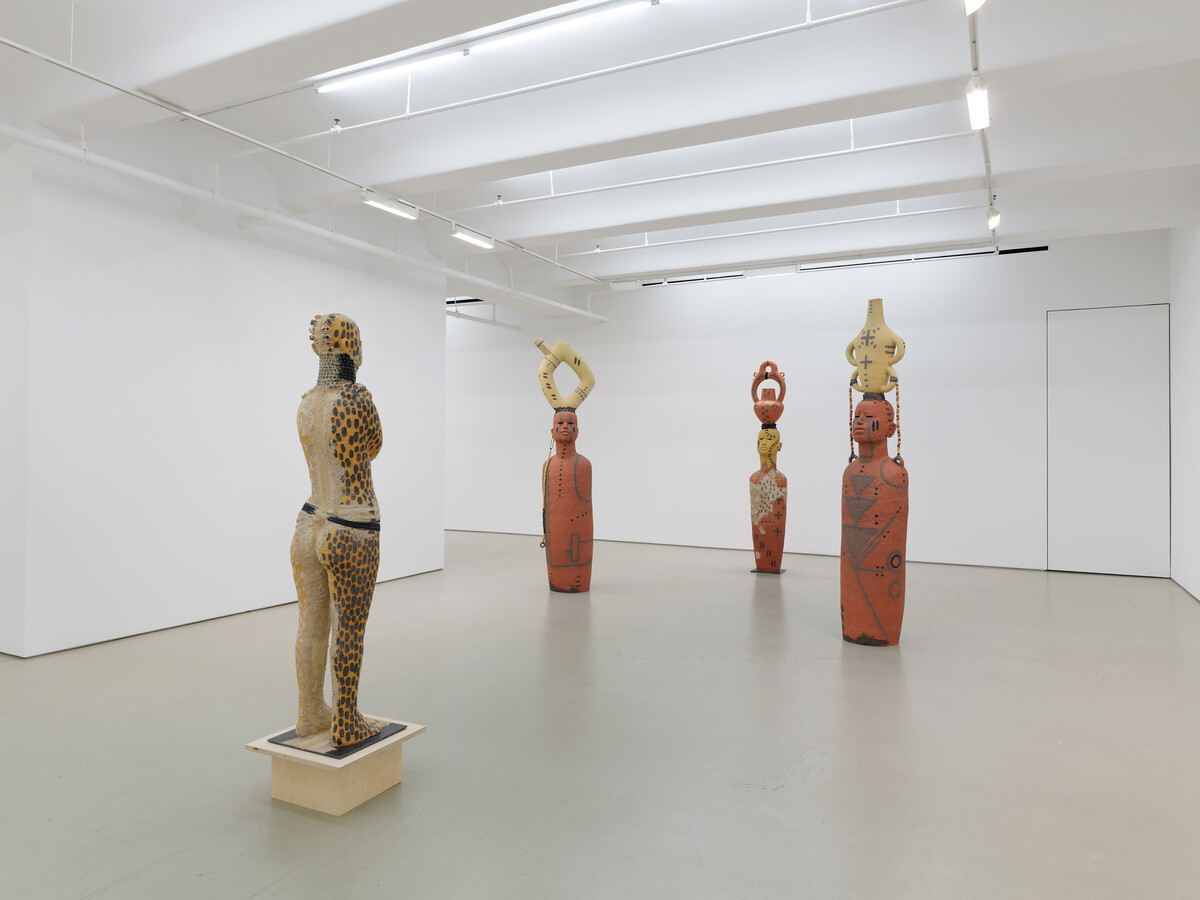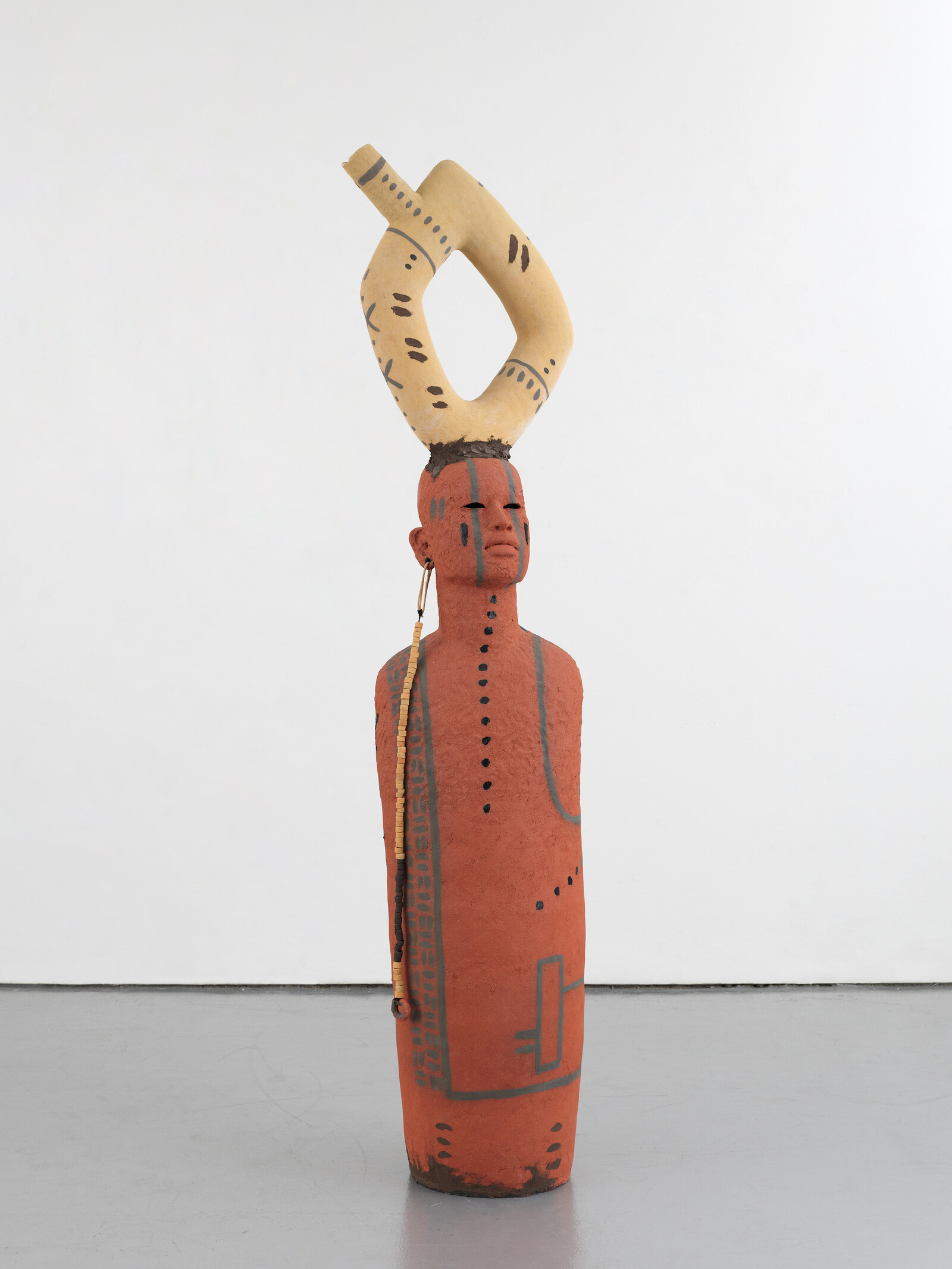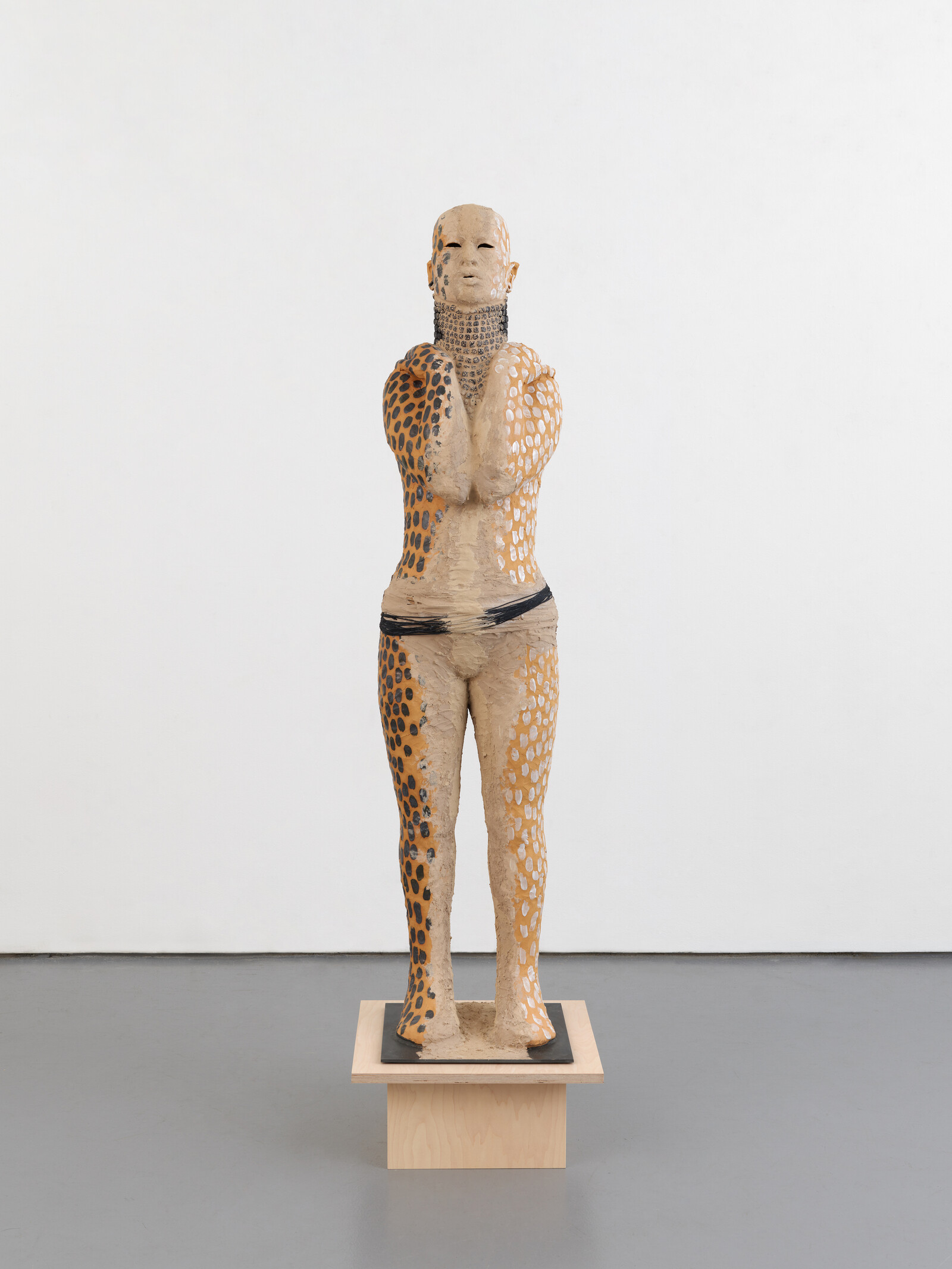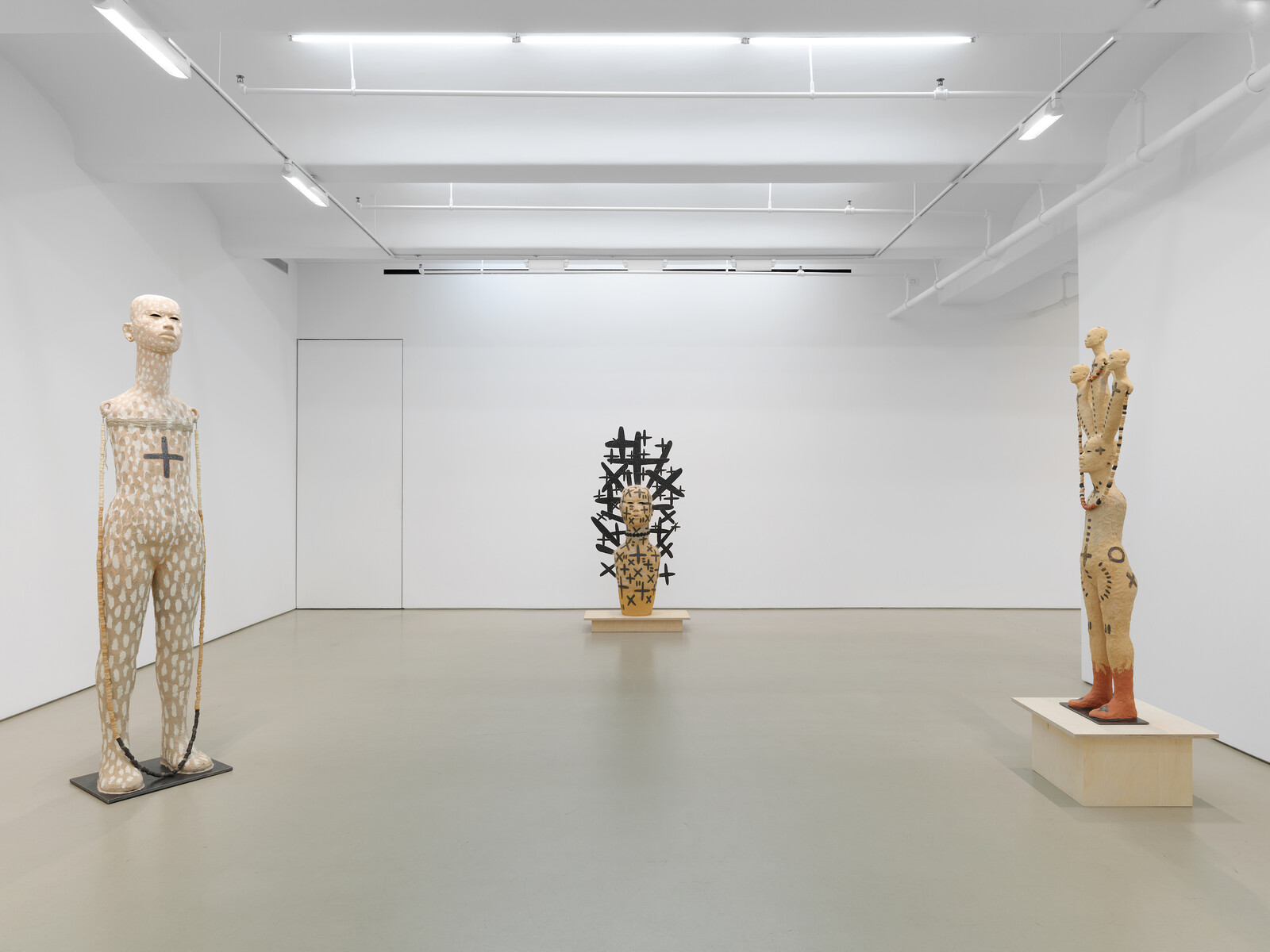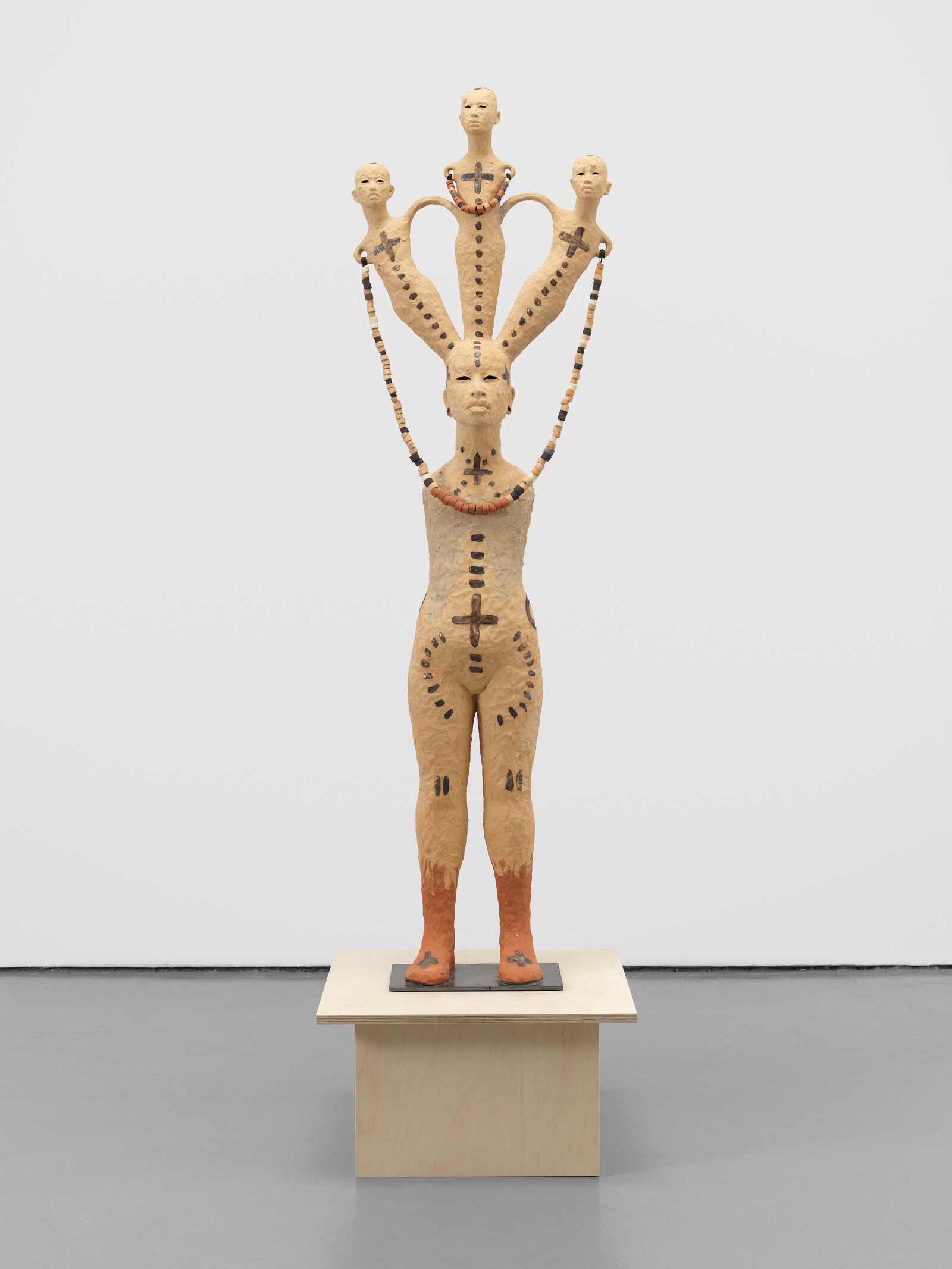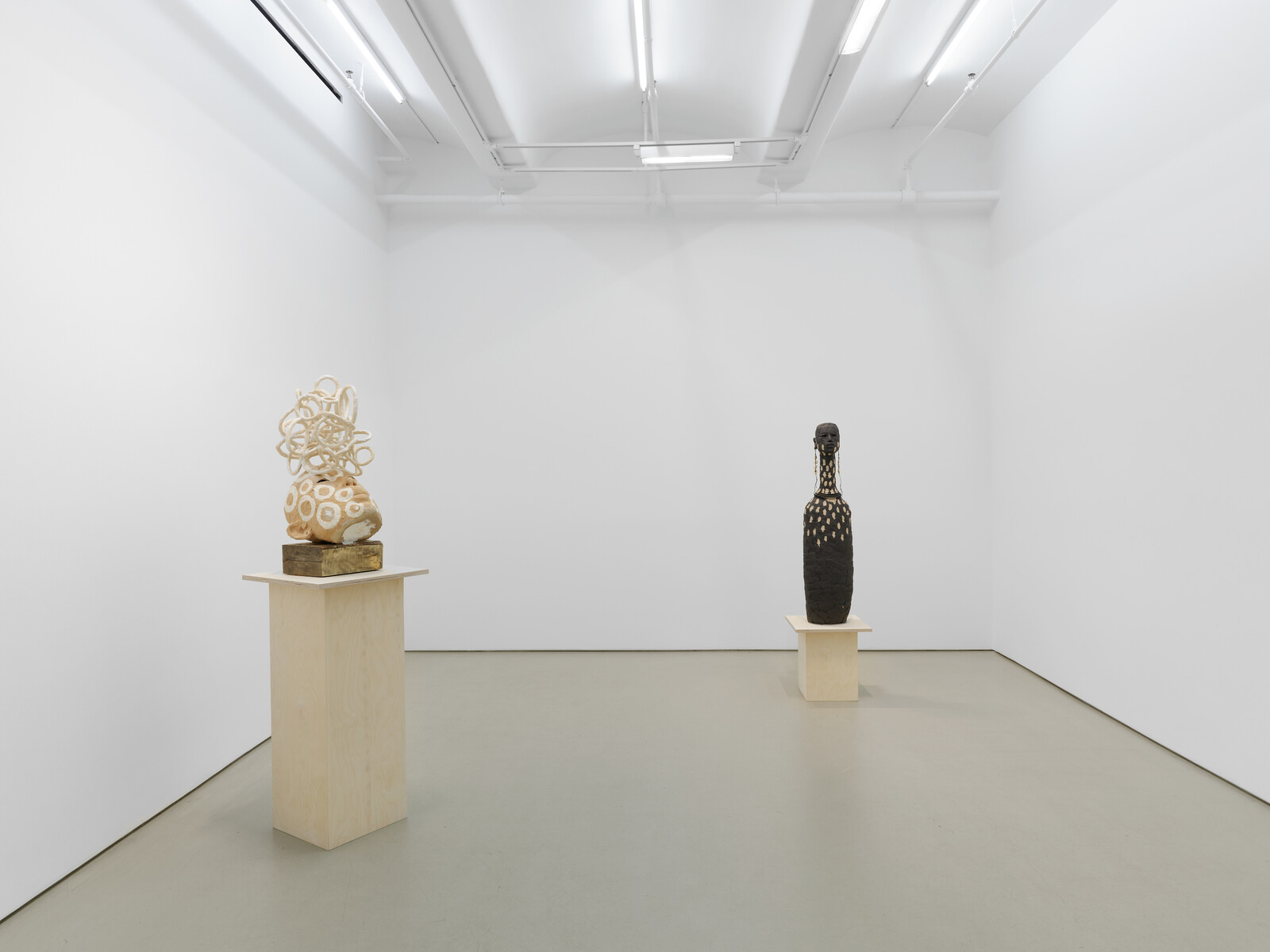February 23–April 8, 2023
The new human may not be very human after all, and that’s not necessarily a bad thing. As Sylvia Wynter argues, the Western concept of the human—or, more specifically, the category of Man—was created at the dawn of the early modern period to establish distinctions between Europeans and non-Europeans that granted the former the right to enslave and exterminate Indigenous populations in what came to be called the Americas, before quickly pivoting this framework toward Africa. The movement away from divine, Christian authority to a secular and legalistic one rooted this constructed racialism in the developing discourse of humanism. And while the consequences resulting from the designations “human” and “not human” quickly spread throughout the economic networks of the era, they were also generated in the cultural sphere with its race- and gender-specific “overrepresentation of Man,” as Wynter terms it.
What is the legacy of this European idea of the human when considering the proliferation of various modes of figuration in contemporary cultural production? Rose B. Simpson’s “Road Less Traveled” contains ceramic humanoid sculptures that look simultaneously ancient and futuristic. Do these works represent a human form that exists on either side of the five-hundred-plus-year history delineated by Wynter? In other words, are Simpson’s sculptures simultaneously post-human and prior to “the human”? An Indigenous artist from the Santa Clara Pueblo in New Mexico, Simpson mentions in a recent interview for Vogue that her family’s work with clay extends beyond seventy generations, meaning around a thousand years prior to Spanish incursions into what is now the southwestern United States. Does this position Simpson’s sculptures in a temporality long preceding and then running partially parallel to a Western one? At the very least, they participate in the centuries-long contestations between settler-colonialists and Indigenous groups over what it means to be human, including the rights and values that accrue to it.
In any case, the figures in “Road Less Traveled” are the offspring and the ancestors of Simpson’s more futuristic-looking earlier work. As such, they both expand and collapse history. If “the human” and “Man” in Western civilization are historically determined categories, then perhaps what has been excluded from the human is what succeeds it. Certainly, technology is playing a role in replacing inherited notions of the human, and previous Simpson sculptures gestured at this with attached scraps of metal or wires—a bit of steampunk aesthetics combined with traditional clay. In the works on display at Jack Shainman, the visions come from within, emanating more from the figures themselves, as opposed to being affixed to their exteriors. Conjure II (all works 2022) is a slightly oversized tan head tilted upward on a wooden block with a cluster of loops projecting from its forehead like a waking dream, or possibly a knotty obstruction.
In fact, the majority of the dozen sculptures feature shapes protruding from otherwise self-possessed heads that do not usually read clearly as female or male. Each of the bodies and faces are uniquely covered in marks, and nearly all the sculptures are adorned with a string of stone or clay beads, whether around the neck, dangling from an ear, or attached in place of arms. Black, metallic cross-marks jut outward from the skull, neck, and torso of Remind, whereas three small, thin torsos and heads emerge from the crown of Guides. The titles of these two sculptures signal the past and the future, which each of the works in the exhibition harbors. Predominantly armless and hollow inside, Simpson’s sculptures are vessels for Indigenous culture, familial transmissions, and personal aspirations. As vessels, they also reference the millennia-old traditional ceramic pots and containers from which Simpson’s work descends. Three figures installed together—Vital Organ: Heart, Vital Organ: Gut, and Reclamation IV—address this lineage directly with imaginative versions of pottery fused to the top of their heads.
Only one of the sculptures in the exhibition has arms, which it uses to hug or protect itself. The closest to life-size, as well as the mostly recognizably female figure, it is sutured up the middle with grout as if attempting to hold itself together. This slightly anomalous piece shares the show’s title and represents the challenges in moving between cultures, temporalities, and traditions. Nevertheless, the equanimity of Simpson’s figures is striking. The faces are featureless, even a bit inscrutable in maintaining their claims to a specific knowledge and historical experience. This may be partly why the eye sockets are always hollow in both absorbing and vacating the gaze. Closely accompanying the early modern definition of Man were new formulations of the individual self, ones that current political economies and technologies are putting under duress, and for which “Road Less Traveled” illuminates a different trajectory.
